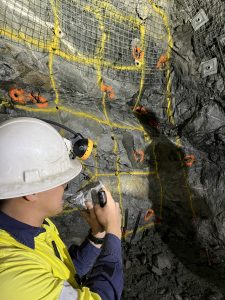Comment by Associate Director Isaac Stewart
On 23 December 2022, the Competition and Consumer (Gas Market Emergency Price) Order 2022 came into effect – setting a price cap of $12 per gigajoule.
Although the cracks have been showing in our energy policy for some time, they became a crevasse last Monday [March 27] with the green-lighting of new safeguard mechanisms, which Credit Suisse energy analyst Saul Kavonic described as the “most anti-business, anti-market policy Australia has had for some time”.
The Federal Government’s deal with the Greens was to enact changes to the ‘safeguard mechanism’, a scheme that aims to reduce Australia’s carbon emissions by a legislated target of 43% by 2030.
In a press conference, Greens Leader Adam Bandt said the mechanism could spell doom for “dozens of new coal and gas projects” – prompting Albanese to quickly refute the claims of the Greens.
The changes to the safeguard mechanism – which come into play on the 1st of July 2023 – will be exploited by the Government to decrease the CO2 emissions of 215 companies that produce somewhere in the ballpark of 100,000 tonnes of CO2 per annum (30% of Australia’s emissions).
Grattan Institute energy analyst Tony Wood said it was “unlikely” the mechanism change would disrupt future energy projects as the mechanism only applied to companies that emitted more than 100,000 tonnes of CO2 a year.
“There’s over 100 projects that have been listed (as possible projects) by the government across an entire range of sectors, from hydrogen to oil and gas. Most of those projects are never going to go ahead anyway, and therefore are not at risk,” Wood told the ABC.
The Australian Petroleum Production and Exploration Association (APPEA) is concerned the mechanism will deter future investment in the energy sector. APPEA CEO Samantha McCulloch says while the sector is committed to net zero, the mechanism would “scare off investment and drive up prices.”
“It’s important that we’re not putting more obstacles in the path to that new investment. The industry is willing to invest, they want to invest, but we need the policy certainty to facilitate that investment and new supply,” McCulloch told the ABC.
Despite Japan and Korea’s appetite to invest in our energy sector and de-risk from China, the shifting sands of Australia’s energy policy are starting to ring alarm bells in Seoul and Tokyo, putting Australia’s investment prospects on shaky ground with the likes of KOGAS, Mitsui and POSCO.
In 2022, Australian gas represented more than 42 per cent of Japan’s LNG imports and 22 per cent of Korea’s, according to industry consultancy Energy Quest. Japan and Korea are Australia’s second and fourth-largest trading partners respectively.
South Korea’s KOGAS invested billions in developing the Santos-controlled GLNG project in Queensland while POSCO – majority owner of Senex Energy – has put a $1 billion domestic gas project (also in Queensland) on ice as a result of the Australian Domestic Gas Security Mechanism (ADGSM).
Ian Davies, the CEO of Senex Energy which mothballed a $1 billion investment as a result of the government intervention, said the ADGSM threatened to “suffocate industry investment confidence. The intervention would mean POSCO would view Australia as a ”much riskier proposition”, Davies told the FT.
Masato Sugahara, chair and CEO of Mitsui Australia – a major investor in the North West Shelf and Browse – presaged the “unintended consequences” of the government’s proposed reforms to LNG export control policy, exacerbating the concerns of Japanese and Korean partners over moves that could pose a threat to their energy security.
“I take the position that government intervention in markets can have unintended consequences … I am personally concerned that short-term interventions may jeopardise business practices which have been built over the long term,” Sugahara told the AFR.
Kavonic says there is a growing concern the Government is undermining its commitments to trade partners around gas exports. “International companies will now see Australia as a country of increased sovereign risk,” Kavonic told the FT.
EnergyQuest CEO Graeme Bethune said Japanese and Korean “angst” over LNG export limits might also have repercussions for the switch to green energies – including low-carbon ammonia, a potentially critical solution in Japan’s decarbonisation journey. “Australia is counting on both countries to invest in hydrogen export projects,” Bethune told media.
The double-edged sword of politics could mean that the capital required from Japan and Korea to support Australia’s budding renewable energy sector could ultimately be disrupted by the country’s energy policy.
Although the safeguard mechanism makes sense – in a perfect world – Australia needs to consider the impact its energy policy is having on maintaining the country’s allure as an investment prospect.



